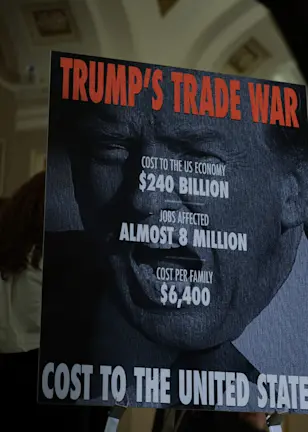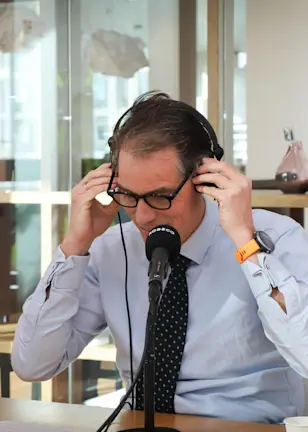The show goes on
The recent US elections have attracted enormous global attention. Given that the US currently comprises 73% of global developed markets (DM),1 it’s understandable that much focus is placed on this exceptional nation, despite it accounting for only 4% of the global population. Meanwhile, emerging markets, though six times smaller in market capitalization, have populations more than ten times larger than that of the US. The country’s stocks have outperformed since 2011 and continue to attract significant investor interest, despite bubble-like valuation levels.
Currently, the Cyclically Adjusted Price Earnings (CAPE) ratio for the US stands at 37, similar to the levels seen in 1929 and 2000, and post-election performance has continued in the same vein. For historical perspective, we looked at academic research on the ‘presidential cycle’ to examine how stock markets perform during election years. Historically, markets tend to perform well in the third year of the cycle and under Democratic presidents, loosely aligning with the strong returns seen in recent years. 2
Red stocks versus blue stocks
Some companies have stronger ties to the Republican party (e.g., Palantir), while others are more closely aligned with the Democratic party (e.g., Netflix), a distinction often measured through political donations or the known political stance of key executives. Stock reactions around elections can also highlight these partisan sensitivities. For instance, the day after the recent US election, Tesla saw its stock jump by over 10%, underscoring how some companies are more sensitive to political outcomes than others. This raises an intriguing question: do US equity styles perform differently under presidents from opposing parties? Specifically, how do low volatility, value, quality, and momentum stocks fare under Republican versus Democratic administrations?
Table 1: Equity and US style returns (in %) across different parties: July 1963-October 2024

Source: Robeco and Kenneth French data library. Rf is 30-day T-bill rate. Historical backtests.
The equity premium (equity-cash) appears lower under Republican presidents, but low volatility stocks tend to perform relatively well during their terms. Conversely, the other US equity styles are only modestly influenced by the political party in power. The value and quality premiums are slightly more ‘red’, while momentum is slightly more ‘blue’. However, the statistical significance of these differences is low, and despite the media's focus on elections, our findings indicate that the impact of presidential politics on US style returns is ultimately minimal.
Elections have limited impact on EM versus US stock markets
To assess the influence of US elections on emerging markets (EM) versus US stock performance, we conducted a simple test comparing returns during nine election months since 1998. Figure 1 illustrates the relative performance of EM stocks versus US stocks around these elections. On average, EM stocks lagged US stocks by 1.7% during November election months. However, there is considerable variation. For instance, in November 2004 (Bush/Kerry), EM outperformed US stocks by 5.2%, whereas they underperformed by 8.2% in 2016 (Trump/Clinton). This election year, US stocks outperformed EM stocks by 3.8% (until 9 November). Interestingly, these patterns often reverse in the following month. In December of election years, EM stocks outperformed US stocks by an average of 2.4%, with positive relative returns in eight out of nine cases.
Figure 1: EM minus US monthly stock returns around US elections

Source: Robeco.
The positive December effect for EM also exists in non-election years (average 2.3%), thus elections do not seem to drive this December effect. Overall, these results are too volatile to draw firm conclusions. Based on this analysis, one could argue that US elections have little impact on short-term US versus EM market returns.
CAPE hope versus CAPE fear
Now, let’s consider the long term. What are the chances that US stock markets will continue to outperform all others in the years ahead? Over the current bull market, US equities have become increasingly expensive, as reflected by the CAPE ratio. In November 2024, the US CAPE stands at 37, more than two standard deviations above the historical average of 18. This current value places it in the 97th percentile since 1900. Figure 2 below illustrates the historical CAPE ratio and presents three potential scenarios for where it might be in five years: 40, 30, and 20.
Figure 2: US CAPE 1900-2030

Source: Robert Shiller, Robeco.
Global markets are increasingly concentrated in a small group of highly valued US stocks, which heightens their vulnerability to geopolitical risks, antitrust regulation, and competitive pressures. While the Trump administration did not break up Big Tech during his previous presidency, this stance could shift in the coming years. Historically, exceptionally high profit margins have been temporary in well-functioning markets, and periods of high market concentration are often followed by smaller stocks outperforming their larger counterparts. 3
In a recent analysis, we demonstrated that expected returns for US stocks tend to be lower in two out of three CAPE scenarios, underscoring valuation risks.4 Low volatility stocks present a prudent hedge against these rising risks in US markets. A growing concern for the US economy is the persistent fiscal deficit. Currently at 7.2% of GDP, the federal deficit is near historic highs, with no signs of contraction. Trump’s proposed policies are likely to push the deficit even higher. The last time the US government ran a surplus was more than two decades ago.
With national debt projected to approach USD 36 trillion, the burden of interest payments alone could severely constrain future budgets. Despite its urgency, the deficit barely featured in campaign debates. However, its impact is becoming more apparent in the bond markets, where 10-year Treasury yields have risen from a pre-election low of 3.6% in September 2024 to 4.3% by 11 November. This trend underscores the market’s growing unease with the nation’s fiscal trajectory.
In contrast, many emerging markets boast advantageous economic fundamentals with broadening tax bases servicing much lower debt levels, and as a group present attractive relative valuations. Figure 3 illustrates the valuation gap between EM and DM since 2000, using key metrics such as price-to-book and price-to-earnings (P/E) ratios. From 2001 to 2008, EM experienced substantial multiple expansion, coinciding with a period of significant outperformance. However, since 2010, following the global financial crisis, EM valuations have steadily declined relative to DM, contributing to their underperformance over the past 15 years.5 This prolonged period of valuation compression could set the stage for a reversal. As multiples normalize, EM may benefit from a valuation tailwind, supporting stronger relative performance in the future.
獲取最新市場觀點
訂閱我們的電子報,時刻把握投資資訊和專家分析。
Figure 3: EM equity valuations relative to global DM equity valuations

Source: Robeco’s 5-year Expected Returns 2025-2029: Atlas Lifted. Refinitiv Datastream, MSCI, Robeco. Each month we divide the bottom-up-derived valuation ratio of the MSCI Emerging Markets Index by the same valuation ratio for the MSCI World Index. The MSCI World only contains developed markets.
Safer than US Treasury bonds?
As US markets grapple with stretched valuations and a fiscal deficit which won’t go away anytime soon, investors might take a different view to a traditional safe haven like Treasuries. Over the past decade, it might surprise some to learn that an EM stock has provided more stable returns than US bonds. Figure 4 highlights Chunghwa Telecom, a Taiwanese company known for its conservative financial management and low stock price volatility. Over the past 11 years, the stock delivered positive annual returns in 10 of those years. Even in 2022, when it posted a modest loss of 8%, Chunghwa Telecom still outperformed US 10-year Treasuries, which fell by 15%.
Figure 4: Chunghwa Telecom (TW) vs US 10-year Treasuries USD returns

Source: Robeco and FRED. Example of EM stock with lowest stock return volatility.
While Chunghwa is a cherry-picked example, with much lower returns than high-growth EM stocks like Taiwan Semiconductor Manufacturing Company (TSMC), it illustrates an important point: careful stock selection based on risk can yield stable performance. Companies with strong fundamentals and prudent management can deliver lower volatility and consistent returns, even in emerging markets, which are often perceived as highly risky.
Be selective in emerging markets
The stock example in Figure 4 serves as a simple yet powerful example of how the risks of investing in emerging markets can sometimes be surprisingly low. However, this particular stock is relatively expensive and has a lower growth rate. When investing in emerging markets, factors like the price paid, profitability, financial risk, macro risk, growth, and momentum are all crucial determinants of stock performance and should be considered together.6
Robeco has a long history of diversified emerging market investing, with a dedicated EM strategy dating back to 1994. We believe a second growth wave is on the horizon.7 Our active EM strategies, both quantitatively and qualitatively managed, typically have betas around 1.0 and have consistently delivered benchmark-relative returns. The P/E ratios of these strategies are all below the EM market average of 14, which already compares favorably with the P/E of US stocks of 30.
For investors looking to preserve capital, Robeco offers defensive EM strategies, with lower beta and lower volatility compared to the market. Additionally, these strategies provide an annual dividend yield of 5.0%, which is particularly attractive in a lower-interest-rate environment.
Start loving emerging markets
US elections may dominate the headlines, but their impact on market performance is minimal – especially when it comes to emerging markets. With US valuations stretched and fiscal risks rising, the long-term potential of EM stocks is becoming increasingly compelling. By shifting focus from the often overhyped US election cycle to the long-term potential of emerging markets, investors can find more stable growth and potential for higher returns in a changing global economy.
Footnotes
[1] Composition of the MSCI World Index as of 1st November 2024.
[2] See for example, Santa-Clara, Valkanov (2003) The Presidential Puzzle: Political Cycles and the Stock Market, The Journal of Finance
[3] The Size Premium in a Granular Economy.- Emery/Koëter – September 2024. https://papers.ssrn.com/sol3/papers.cfm?abstract_id=4597933
[4] In the July 2024 white paper, we link three CAPE scenarios to the relative return of Equities and Conservative Equities. What if history rhymes? Equity return scenarios for the next five years | Robeco Global
[5] Robeco – Double delight: Seizing the dual discount in emerging markets – September 2023
[6] Robeco – Five key insights on emerging markets equities – June 2024
[7] Robeco – Emerging markets’ second growth wave is straight ahead – May 2024
Important information
The contents of this document have not been reviewed by the Securities and Futures Commission ("SFC") in Hong Kong. If you are in any doubt about any of the contents of this document, you should obtain independent professional advice. This document has been distributed by Robeco Hong Kong Limited (‘Robeco’). Robeco is regulated by the SFC in Hong Kong. This document has been prepared on a confidential basis solely for the recipient and is for information purposes only. Any reproduction or distribution of this documentation, in whole or in part, or the disclosure of its contents, without the prior written consent of Robeco, is prohibited. By accepting this documentation, the recipient agrees to the foregoing This document is intended to provide the reader with information on Robeco’s specific capabilities, but does not constitute a recommendation to buy or sell certain securities or investment products. Investment decisions should only be based on the relevant prospectus and on thorough financial, fiscal and legal advice. Please refer to the relevant offering documents for details including the risk factors before making any investment decisions. The contents of this document are based upon sources of information believed to be reliable. This document is not intended for distribution to or use by any person or entity in any jurisdiction or country where such distribution or use would be contrary to local law or regulation. Investment Involves risks. Historical returns are provided for illustrative purposes only and do not necessarily reflect Robeco’s expectations for the future. The value of your investments may fluctuate. Past performance is no indication of current or future performance.


















